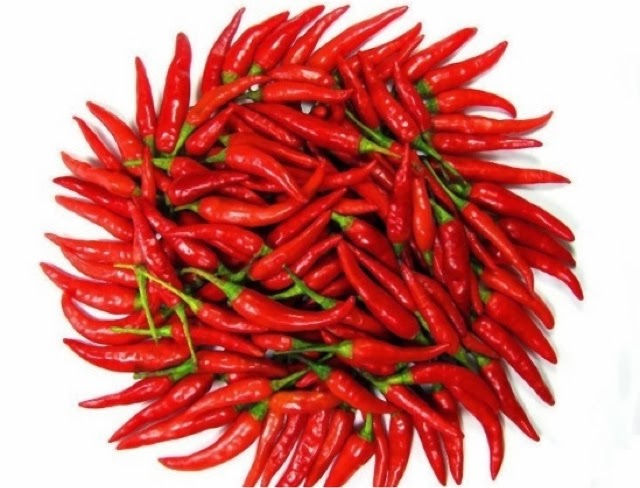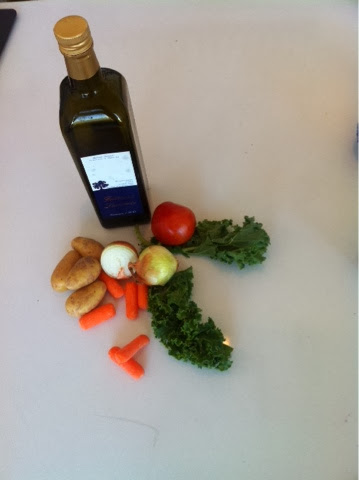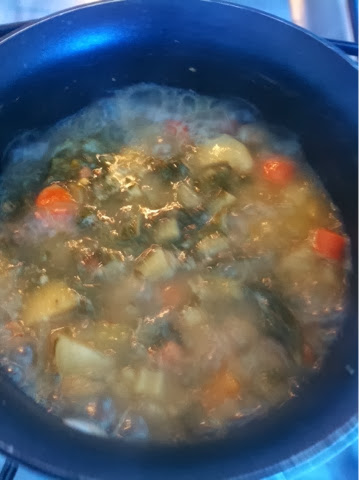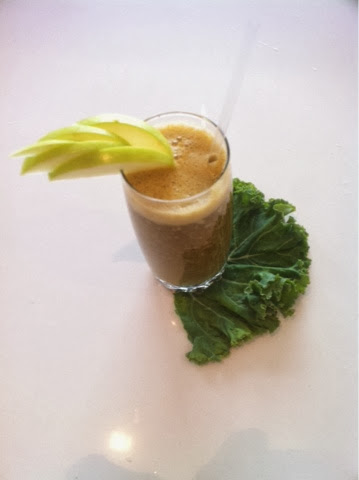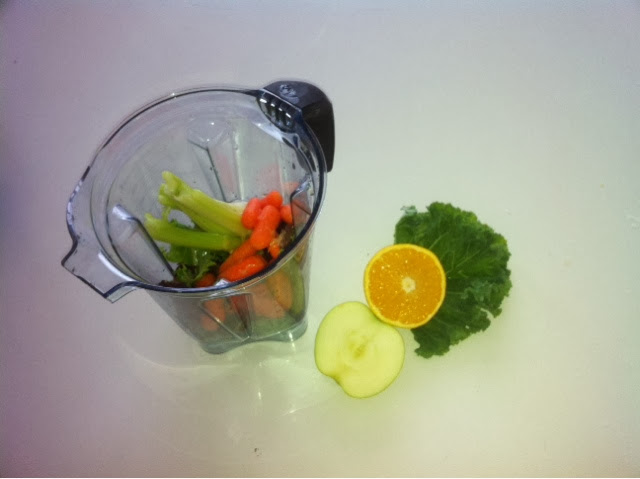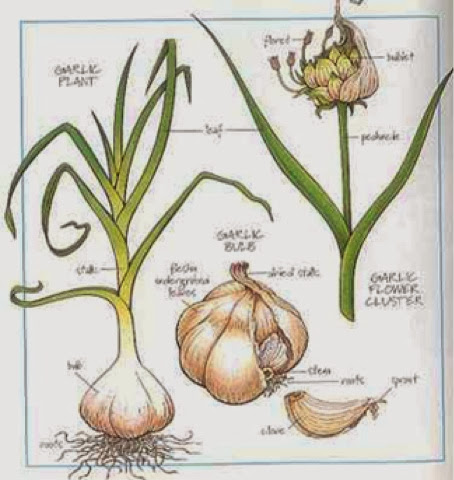venerdì 17 gennaio 2014
Tiramisu ;))
giovedì 16 gennaio 2014
Elthy Energy Fundrising (for healthy lunches for children)
I need your help to make a change in people life,
to show that elthy food is the key to an healthy life,
to help children provviding an healthy lunch at school,
provviding the right education about what they eat and how they are effecting there life
you are what you eat
I m going to race the NYC Triathlon supperted by a good training and a
good diet, please help me to support education so that other children in
the future would do the same.
click and donate
Thank you
Francesco
martedì 7 gennaio 2014
Peperoncino (red chili pepper) is good for us
My Minestrone (Toscano)
domenica 5 gennaio 2014
Good Morning Healthy Energy
sabato 4 gennaio 2014
The healthy benefit of Rosemary Herb
Medicinal Uses: Rosemary stimulates the central nervous system and circulation making it beneficial for low blood pressure and sluggishness. Rosemary oil and rosemary essential oil are used to alleviate the pain of sprains, arthritis, sciatica and neuralgia. Rosemary has also been used traditionally to ease asthma. “The essential oils in rosemary leaf can block histamine, the chemical culprit of both asthma and allergies. ”(White, Linda. MD)
Rosemary for memory, concentration and focus.Rosemary has a long herbal tradition as a herb that improves concentration and memory, Greek students would braid Rosemary into their hair to help them with their exams. Modern science attributes much of rosemary's action on the central nervous system to it's potent antioxidant, rosmarinic acid. The uplifting aroma of a fresh sprig of rosemary in the summer air will confirm both the science and history with your own senses.
Rosemary for beautiful skin and hair: Rosemary is one of best hair tonics available, whether you are worried about hair loss, or just want healthy, happy hair, rosemary extracts used in shampoos and herbal hair rinses will work wonders. A few drops of the essential oil can be applied directly to the scalp or hair brush to restore dry, flyaway hair and make it shine. Rosemary essential oil stimulates hair follicles and circulation in the scalp, which may help prevent premature baldness. Use rosemary on a continuing basis for a healthy scalp that encourages healthy hairgrowth and slows hair loss. Hoffmann, David Rosemary extract (rosmarinic acid) is a natural way to stabilize and extend the shelf life of hand made cosmetics, creams, lotions, and other herbal compounds. Use rosemary in skin care to tone and soften skin.
How to Use Rosemary Oil The Commission E approved the internal use of rosemary leaf for dyspeptic complaints and external use as supportive therapy for rheumatic diseases and circulatory problems.Commission E MonographsRosemary infused oil and rosemary essential oil are both used in massage oilformulations to relieve the pain of arthritis and of sore aching muscles. Rosemary used as a massage oil also helps to tone the circulatory system. Antioxidant compounds in rosemary prevent uterine spasms andmenstrual cramps. Rosemary essential oil helps alleviate water retention and increases circulation when used in massage blends.
Cooking with Rosemary. Unlike milder herbs, rosemary can withstand longer cooking times, and lends itself well to roasted meats, chicken and hearty stews. A few teaspoons of chopped rosemary lends a tangy taste to biscuits as well. Rosemary vinegarsare an excellent and healthy way to dress cold vegetables and salads.
Rosemary is such an extremely useful herb, with so many culinary, medicinal and aromatherapy attributes that it deserves a treasured place in your home. Even the twigs, stripped of their leaves find use as kindling and as a aromatic addition to barbecue fires.
venerdì 3 gennaio 2014
In Search for the Black Rooster (Il Gallo Nero)
The Black Rooster emblem is 700 years old and it is far more than a symbol. It is a proud designation and represents the strict government regulations, overseeing everything from the yield to production that uphold the reputation of Chianti Classico. Branded in 1384 as the emblem for the League of Chianti, today the label is placed on the neck of a bottle of wine from the Chianti Classico zone.
But why a Black Rooster? Well, that is where the legend comes in… Red wine had been produced in this area since around 1000 A.D. and Florence and Siena long feuded over rights to this region. Finally, around 1200, they agreed to end the feud with a competition.
 Horsemen
were to depart from rival the cities at the crow of a rooster. Wherever
they met would determine the boundary lines and settle the dispute once
and for all. While the Senesi chose a well-fed white rooster, the
cunning Florentines chose a starving black rooster. On the day of the
event the white rooster dutifully crowed at sunrise, but the poor hungry
black rooster had begun to crow long before, thus giving the Florentine
rider a considerable advantage. The Senese horseman didn’t get very far
and borders were established with the region now belonging to Florence.
Horsemen
were to depart from rival the cities at the crow of a rooster. Wherever
they met would determine the boundary lines and settle the dispute once
and for all. While the Senesi chose a well-fed white rooster, the
cunning Florentines chose a starving black rooster. On the day of the
event the white rooster dutifully crowed at sunrise, but the poor hungry
black rooster had begun to crow long before, thus giving the Florentine
rider a considerable advantage. The Senese horseman didn’t get very far
and borders were established with the region now belonging to Florence.POMAROLA Tuscany's Tomatoes Souce
Ingredients for 6 people
- 600 g/18 oz. ripe (but not squashy) tomatoes
- 15-20 leaves fresh basil
- 1 onion
- 2 carots
- Olive oil
- 3 cloves of garlic, peeled and quartered
- Pasta quantities: 80g as a starter 120g for main course per person

- boil the fresh tomatoes for few minuts, remove the skin and chop them
- one expresso cup of extra virgin olive oil in the cooking pod then a pre cleaned a mushed garlic, onion, carots, salt and some pepper.
- warm everything as soffritto style
- add the tomatoes and cook for a good 5-8 minuts at medium flame to reduce the natural water of the veggy and the acidity.
- check salt and pepper, if you like add peperoncino
- boild the pasta (suggested spaghetti o fettuccine o capellini) checking cooking time on the box
- strain the past 1-2 minuts before cooking time and finished in the souce with low flaime
- serve with some extravirgine olive oil and parmigiano
- guarnish with basil leaves
How Good are ALMONDS ?
DRINK ALMONDS MILK !!!

9 Health Benefits of Almonds:
1. They reduce heart attack risk.
Those who consume nuts five times a week have about a 50 percent reduction in risk of heart attack according to the Loma Linda School of Public Health.
2. They lower ‘bad’ cholesterol.
Almonds added to the diet have a favorable effect on blood cholesterol levels, according to a clinical study by Dr. Gene Spiller, Director of the Health Research and Studies Center, Inc.
3. They protects artery walls from damage.
It was found that the flavonoids in almond skins work in synergy with the vitamin E, thus reducing the risk of heart disease (Research at Tufts University).
4. Almonds help build strong bones and teeth.
The phosphorus in almonds helps make this possible.
5. They provide healthy fats and aid in weight loss:
- Although nuts are high in fat, frequent nut eaters are thinner on average than those who almost never consume nuts. (Data from the Nurses’ Health Study)
- Those who ate nuts at least two times per week were 31 percent less likely to gain weight than were those who never or seldom ate them in a study involving 8865 adults. (WHFood’s article on almonds)
7. They help provide good brain function.
Almonds contain riboflavin and L-carnitine, nutrients that boost brain activity and may also reduce the risk of Alzheimer’s disease.
8. They nourish the nervous system.
According to Ayurveda, almonds help increase high intellectual level and longevity.
9. They alkalize the body.
Almonds are the only nut and one of the few proteins that are alkaline forming. When your body is not alkaline enough, you risk osteoporosis, poor immune function, low energy and weight gain.
Did you know?
- Almonds are actually stone fruits related to cherries, plums and peaches.
- 2.51 million tons of almonds were produced in 2010 according to Food and Agriculture Organization.
- United States is the largest producer of almonds. Unfortunately, it also demands that almonds are pasteurized or irradiated. Read more at: The Killing of California Almonds
- From ancient Egypt to modern times, almonds have always been a popular ingredient in lotions and potions.
The True About Milk
...one cup of Milk a day would keep the doctor away...
Wrong!!!
Debunking The Milk Myth: Why Milk Is Bad For You And Your Bones

Indeed, history is replete with unfounded health beliefs, and to everyone’s detriment, the milk myth is among the most tenacious.
Milk is much more than just a drink; it’s a cultural phenomenon that can be traced back thousands of years. And still today, the milk myth resonates loud and clear: in 2001, the average American child consumed 104 quarts of cow’s milk.
Milk depletes the calcium from your bones
The milk myth has spread around the world based on the flawed belief that this protein and calcium-rich drink is essential to support good overall health and bone health in particular at any age. It is easy to understand that the confusion about milk’s imaginary benefits stems from the fact that it contains calcium – around 300 mg per cup.But many scientific studies have shown an assortment of detrimental health effects directly linked to milk consumption. And the most surprising link is that not only do we barely absorb the calcium in cow’s milk (especially if pasteurized), but to make matters worse, it actually increases calcium loss from the bones. What an irony this is!
Here’s how it happens. Like all animal protein, milk acidifies the body pH which in turn triggers a biological correction. You see, calcium is an excellent acid neutralizer and the biggest storage of calcium in the body is – you guessed it… in the bones. So the very same calcium that our bones need to stay strong is utilized to neutralize the acidifying effect of milk. Once calcium is pulled out of the bones, it leaves the body via the urine, so that the surprising net result after this is an actual calcium deficit.
Knowing this, you’ll understand why statistics show that countries with the lowest consumption of dairy products also have the lowest fracture incidence in their population (there’s more on this later).
But the sad truth is that most mainstream health practitioners ignore these proven facts. I know it firsthand because when I was diagnosed with osteoporosis, my doctor recommended that I drink lots of milk in addition to taking Fosamax.
Fortunately, I did neither, because I knew that…
Cow’s milk is custom-designed for calves
Thanks to our creative ingenuity and perhaps related to our ancient survival needs, we adopted the dubious habit of drinking another species’ milk. Nobody can dispute that cow’s milk is an excellent food source for calves. Weighing around 100 pounds at birth, a calf typically gains approximately eight times its weight by the time it is weaned. But unlike humans, once calves are weaned, they never drink milk again. And the same applies to every mammalian species on this planet.Also, each mammalian species has its own “designer” milk, and cow’s milk is no exception. For example, cow’s milk contains on average three times the amount of protein than human milk which creates metabolic disturbances in humans that have detrimental bone health consequences.
It’s important to bear in mind that mother’s milk is excellent nourishment for human babies, but its composition is very different from cow’s milk.
Scientific studies show that milk increases fracture risk
Many scientific studies contradict the conventional wisdom that milk and dairy consumption help reduce osteoporotic fractures. Surprisingly, studies demonstrating that milk and dairy products actually fail to protect bones from fractures outnumber studies that prove otherwise. Even drinking milk from a young age does not protect against future fracture risk but actually increases it. Shattering the “savings account” calcium theory, Cumming and Klineberg report their study findings as follows:“Consumption of dairy products, particularly at age 20 years, was associated with an increased risk of hip fracture in old age. (“Case-Control Study of Risk Factors for Hip Fractures in the Elderly”. American Journal of Epidemiology. Vol. 139, No. 5, 1994).And the 12 year long Harvard Nurses’ Health Study found that those who consumed the most calcium from dairy foods broke more bones than those who rarely drank milk. This is a broad study based on 77,761 women aged 34 through 59 years of age.
In the authors’ own words:
“These data do not support the hypothesis that higher consumption of milk or other food sources of calcium by adult women protects against hip or forearm fractures.” (Source: Feskanich D, Willett WC, Stampfer MJ, Colditz GA. Milk, dietary calcium, and bone fractures in women: a 12-year prospective study. American Journal of Public Health. 1997).
Shocking statistics ignored by mainstream medicine
In the Save Our Bones Program one of the topics I discuss is the complete disregard of scientific evidence that discredits milk and dairy products as the best source of calcium.One exception is Amy Lanou Ph.D., nutrition director for the Physicians Committee for Responsible Medicine in Washington, D.C., who states that:
“The countries with the highest rates of osteoporosis are the ones where people drink the most milk and have the most calcium in their diets. The connection between calcium consumption and bone health is actually very weak, and the connection between dairy consumption and bone health is almost nonexistent.”Surprised? You shouldn’t be, because as I mentioned earlier in this article…
Milk is an acidifying animal protein
Like any other animal derived protein-rich food, milk has a positive potential renal acid load (PRAL) which triggers a protective biological reaction to neutralize all the damaging acidic protein before it reaches the kidneys.The body is designed for survival, so it sacrifices bone density to protect the kidneys and urinary tract because the latter are essential to survival. And the most readily available source of acid neutralizer is in the bones. So even though milk contains calcium, it ends up sapping your bones of that crucial mineral. But that’s not all because…
Today’s milk is a processed food
Until the end of the 19th century in Europe and the beginning of the 20th century in the US, milk was consumed unpasteurized or raw. Later on, homogenization became the industry’s standard. These processes further alter milk’s chemistry and actually increase its detrimental acidifying effects.Raw milk advocates claim that if cow’s milk is left “as is” it is a healthy and wholesome drink. It is true that raw milk is less acidifying than processed milk and that pasteurization and homogenization may cause a long list of digestive and other health problems, but I still don’t recommend drinking any kind of cow’s milk.
Nowadays, milking cows are given antibiotics and most are also injected with a genetically engineered form of bovine growth hormone (rBGH). A man-made or synthetic hormone used to artificially increase milk production, rBGH also increases blood levels of the insulin-growth factor 1 (IGF-1) in those who drink it. And higher levels of IGF-1 are linked to several cancers.
This should not be ignored, especially in view of recent information by Samuel Epstein, MD, Professor of Environmental Medicine at the University of Illinois School of Public Health, and Chairman of the Cancer Prevention Coalition. In an article titled “Monsanto’s Hormonal Milk Poses Serious Risks of Breast Cancer, Besides Other Cancers” (http://www.preventcancer.com/press/releases/july8_98.htm, June 21, 1998) Dr. Epstein concludes that:
“Drinking rBGH milk would thus be expected to significantly increase IGF-1 blood levels and consequently to increase risks of developing breast cancer and promoting its invasiveness.”Even though organic milk is from cows that are not given antibiotics or rBHG, if you truly care about your bone health and your overall health, you should…
Avoid drinking cow’s milk
As I explain in the Save Our Bones Program and contrary to mainstream recommendations, drinking milk and eating lots of dairy products are not the answer to reversing osteoporosis. And while in the Save Our Bones Program no food is completely off limits, I strongly recommend that you explore the different milk substitute options that I will list for you here.But first, I’d like to clarify that unsweetened fermented or cultured dairy products such as yogurt, kefir, and sour cream are acid neutral. Yogurt in particular is chock-full of beneficial qualities. As is the case with milk, organic yogurt does not have rBGH, but even several of the most well-known yogurt brands have stopped using the bovine growth hormone (rBGH). You should call your favorite yogurt company to confirm. One more clarification: when I say unsweetened I mean without sugar or any artificial sweetener. However, you can add honey or stevia, a zero calorie plant-derived sweetener that is delicious and alkalizing as well. I like to carry around stevia packets in my purse so that I’m always able to sweeten food or drinks when I’m on the go.
The best milk substitutes
My favorite milk substitute is unsweetened almond milk, not only because it is alkalizing (as almonds are), but also because it’s delicious and tastes very similar to milk. I even cook with it!If almond milk is hard to get, you can also try rice or soy milk. I strongly suggest consuming only organic soy milk to insure it’s not made with genetically modified soy. There is also some controversy about unfermented soy products, so try to use it in moderation.
What Else Haven’t They Told You?
What else have you been told about bone health by your doctor or other “experts” that is flat out wrong? What other “facts” (like drinking milk does a body good) are keeping you from optimal health?Myths like these are a big reason I created the Save Our Bones Program. To give you the straight scoop on how to deal with osteoporosis the natural way.
I can help you take control of your future.
Learn more about the Save Our Bones Program here →
And remember, if you ever hear someone ask “Got milk?” smile and think to yourself “No, because I know better!”
And as always, I’d love to hear your thoughts. Share them with me and the rest of our community by leaving a comment below.

giovedì 2 gennaio 2014
Benefit of Garlic for Health
Today, we know garlic is an excellent herb for creating and maintaining overall health, but it also has many lesser known, but powerful qualities. For example, many people don't know that it's a naturally powerful antibiotic. This natural antibiotic is effective against toxic bacteria, viruses, and fungus. Available in pills, capsules, liquid and actual raw cloves, garlic is one of the most popular healthy herbs around today.
Pomodoro and Basil Martini
Spaghetti Alio Olio e Peperoncino
1,5 kg spaghetti n 5
1 cup extra-virgin olive oil
6 garlic cloves, peeled
2 tablespoon red pepper flakes (peperoncino)
100 g of parmigiano
warm up the olive oil with the pre-chopped garlic and the peperoncino, to feel the roma onlow flame careful not to burn the garlic or to rich smoking point for the oil.
Get a pod full of boiling water, add 2 tea spoon of sea salt and cook the spaghetti 'al dente' controllin the cooking time from the ox.
once ready strai the spaghetti and mix them with the oil on low flame for 1/2 minuts, Add the parmigiano and black pepper once off the fire.
Serve with a little extra peperoncino and parmigiano on top.
from Firenze with Love
my name is Francesco and since I was a kid I developed the interest and passion for food and drinks. My grandfather Attilio was a wine maker, my mather Vera an exellent home chef... i was spoiled :-) I wanted to know since the age of 12 how to cook, how to combine herbs with vegetable, carbs and protine with my own taste or following classic recipe.
the Alchimy behind, the sensuality that you can build at the dinner table with the rigth combination of food & beverages. The healing energetic way to guide your healphy life with a good diet and whole food...
i m starting this blog to share with everyone what I know, to learn more and have fun discovering the beauty behind something for us important and necessary like eating and drinking.
grazie and
BUON APPETITO



